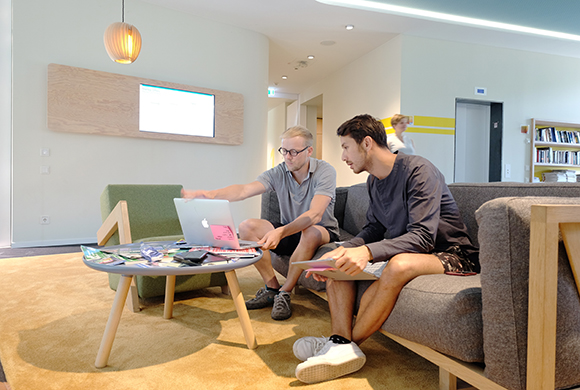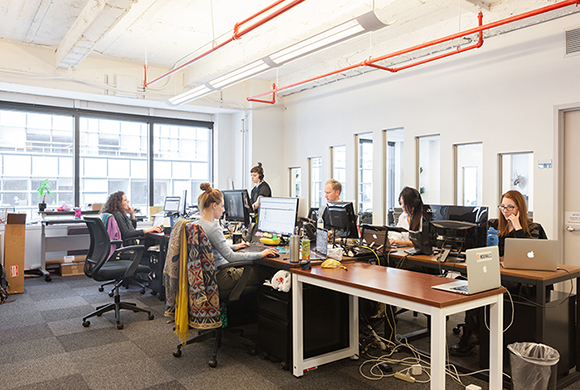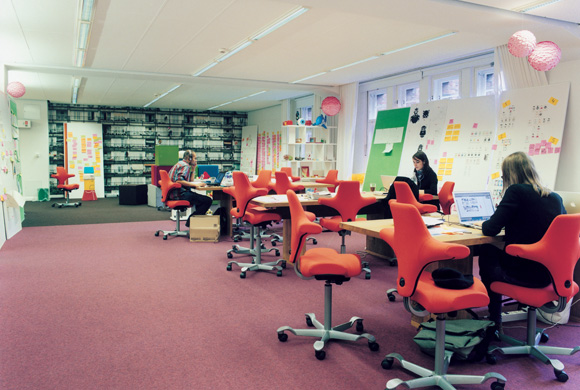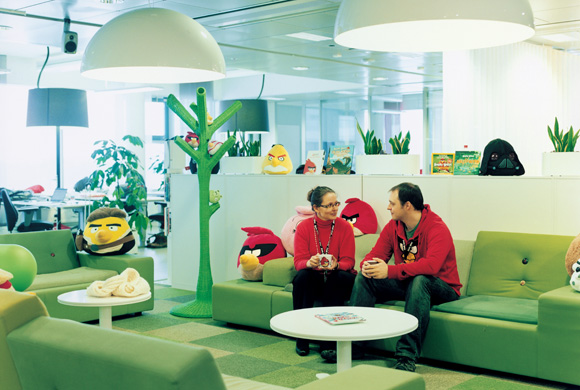Workplace
Oct. 7, 2019
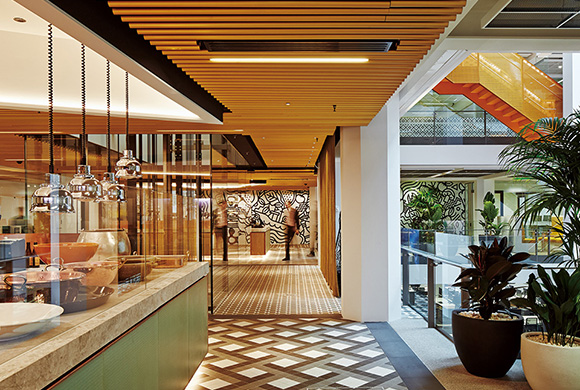
The “healthiest” office in Australia
Global investment bank brings new life to a historical heritage
[Macquarie Group] Sydney, Australia
Macquarie Group is leading workplace innovation. Global Head of Workplace Will Walker, says the design is a tool for improving performance and plays a role in achieving the corporation’s goals as well as in the development of its culture. The office on Shelley Street in Sydney is Australia’s first ABW building.
Macquarie purchased the heritage Martin Place building in 2012 and started a major remodeling project to transform it into the Group’s global headquarters. Work on the Sydney business district landmark was completed in 2014.
The project put emphasis on office worker well-being and flexible workspaces. A glass roof provides natural light to the entire building, and outside air is used so that the air conditioning system doesn’t need to be recycle indoor air.
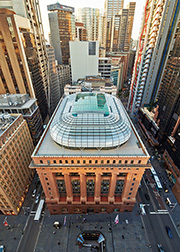
The new dome-shaped glass roof lets in natural light.
Established: 1969
Revenue: Approximately AUD 9.3 billion (2015)
Net Profit: Approximately AUD 1.6 billion (2015)
Employees: 14,085 (2015)
http://www.macquarie.com
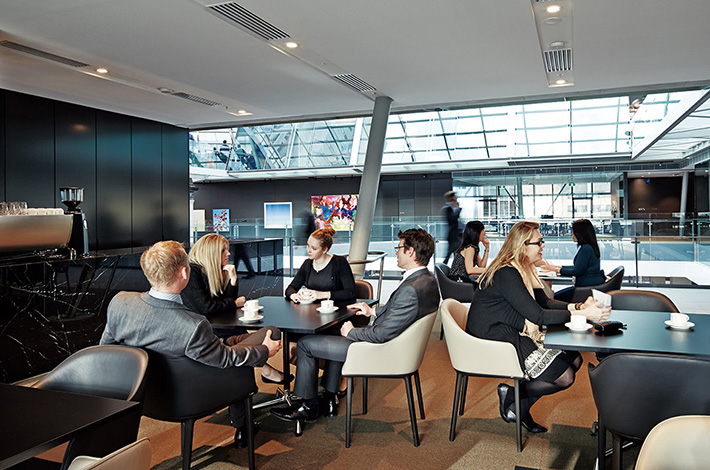
The central citrus staircase and a kitchen on every other floor provides office workers with opportunities to exercise. Amenities include lockers and showers in the bicycle parking area, and a room for yoga and pilates. Quality local produce is served in the café, and the honey from the beehives on the roof is used in the popular biscuits served to guests.
“Although the building has a long history, with the open space in the center, it had a very open and flexible design,” says Mr. Walker. “We are honored that we have been able to bring new life into this part of Australia’s financial services heritage.”
The visitor’s lounge on the top floor uses honey from beehives on the roof of the building.
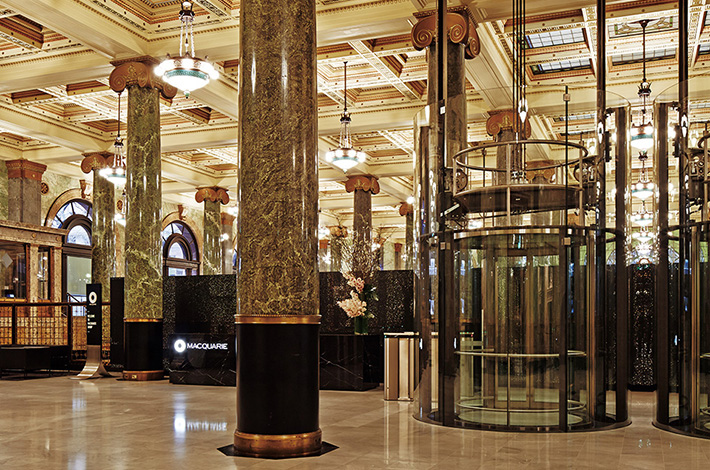
WELL Building Standard, a new certification system launched in the U.S. in October 2014, is committed to placing health and wellness at the center of building design and performance. There are seven criteria and 102 factors for certification.
Air: Removal of pollutants from the air in order to provide optimum air quality in the room. Water: Filtering and removal of pollutants from the water in order to ensure optimum water quality.
Nourishment: Design characteristics that enable accessing healthy food as well as policies promoting healthy eating habits.
Light: Design that assures the level and quality of lighting needed for work, e.g. efficiency of windows, design, outputs, and control. Enhanced contribution to sleep, energy, mood, and productivity through proper lighting.
Fitness: Design that encourages exercising, e.g. opportunities for exercising.
Comfort: Undisturbed, productive interior environment, e.g. consideration for sound and temperature.
Mind: Consideration to support psychological conditions and health, e.g. considerations through design factors, relaxation space, and support by the latest technology.
Educational programs and publications have been offered in stages since 2015. CBRE’s head office in Los Angeles, Heyworth’s office in Shanghai, and Macquarie Group at 50 Martin Place have been certified as pilot projects.
From WORKSIGHT 08(2015.10)
Much of the heritage features, including the marble floor in the lobby and the cylindrical columns, have been repaired or restored.
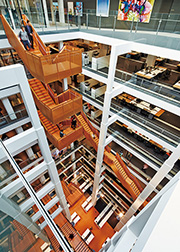 A staircase wrapping around the atrium space connects the collaboration spaces, encouraging office workers to exercise.
A staircase wrapping around the atrium space connects the collaboration spaces, encouraging office workers to exercise.


